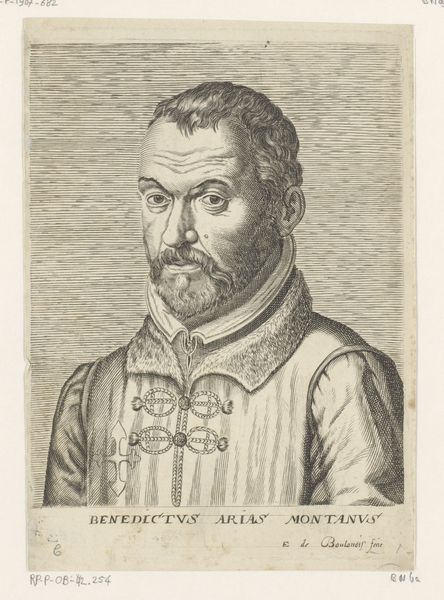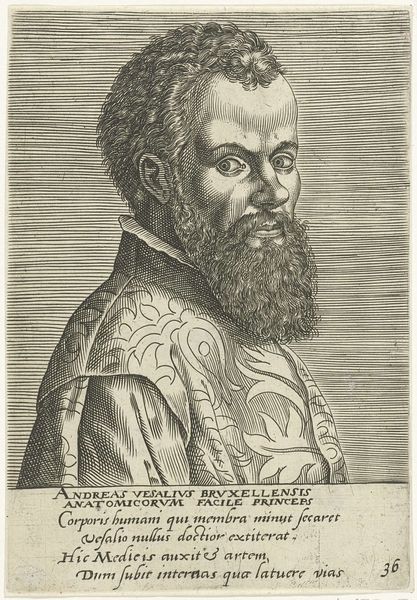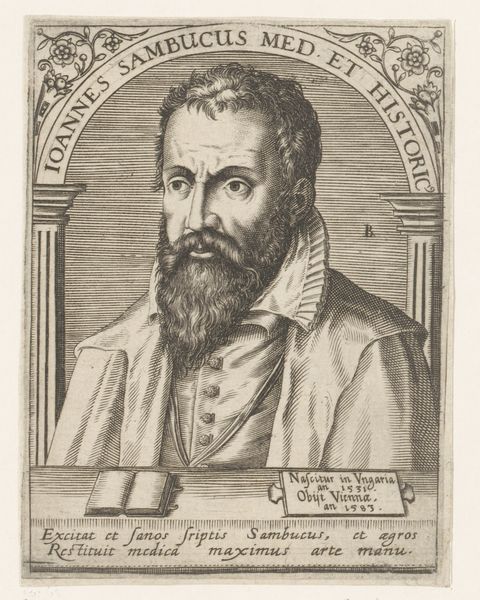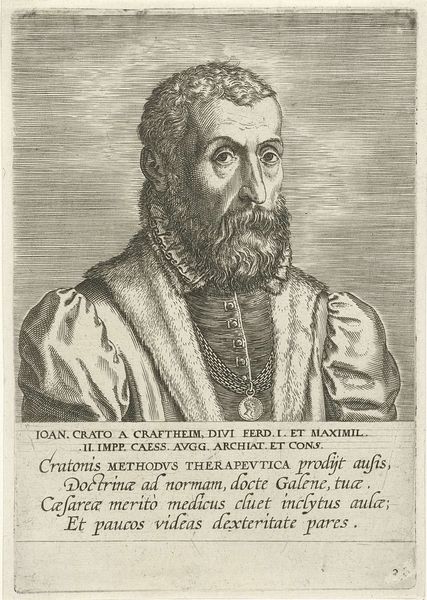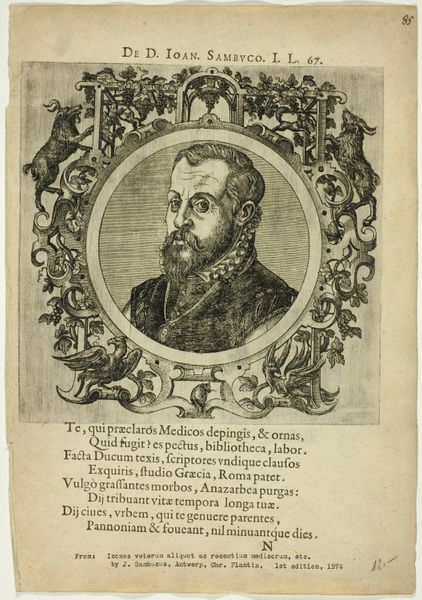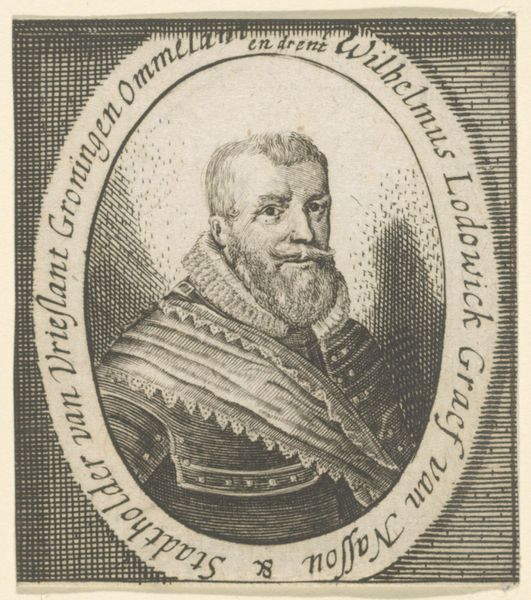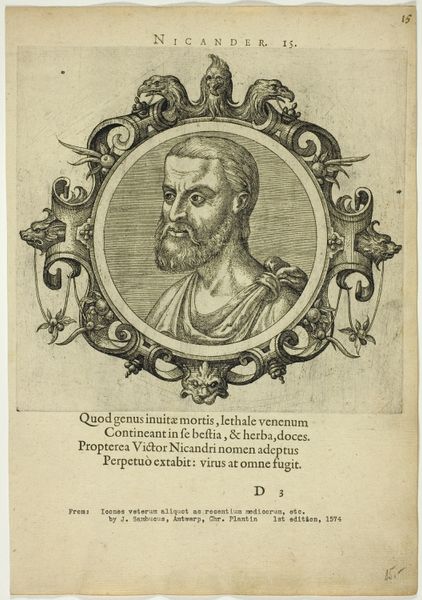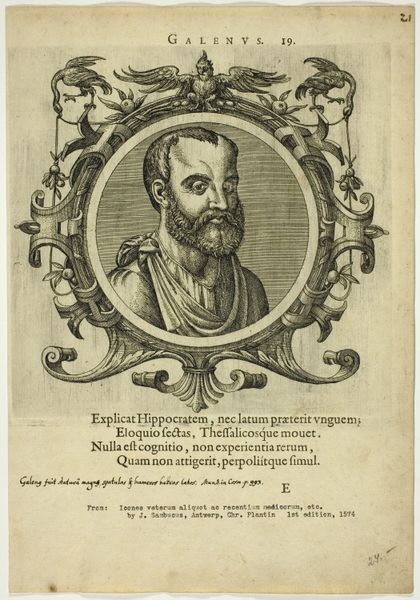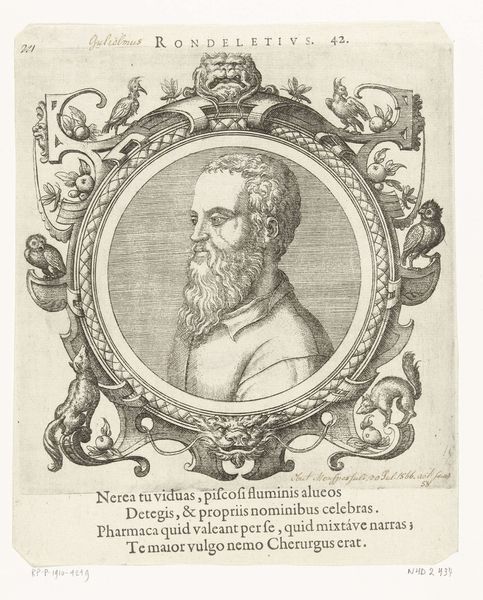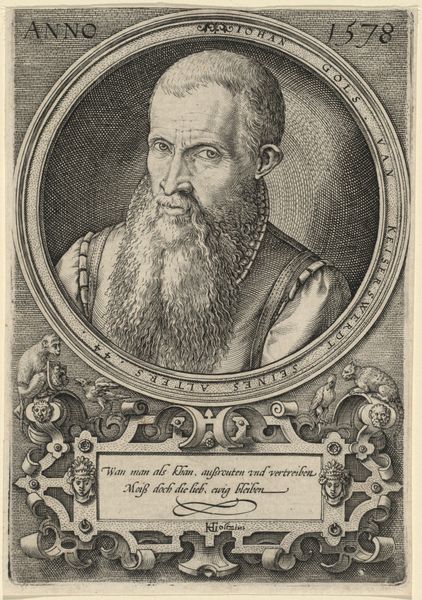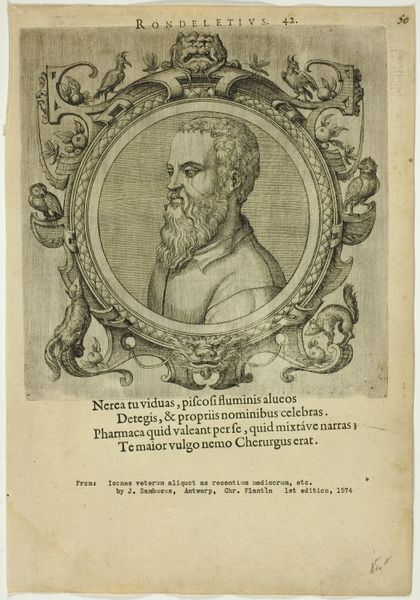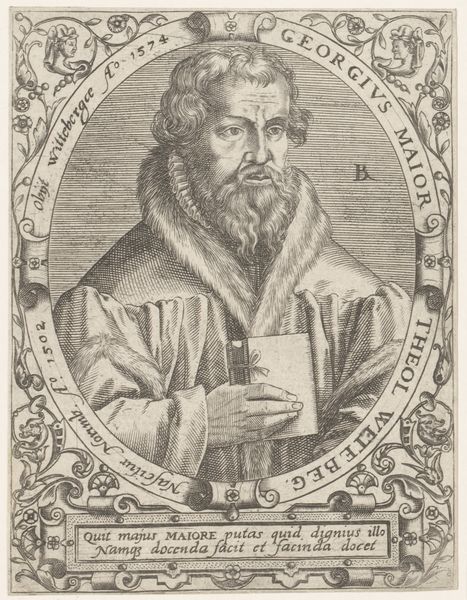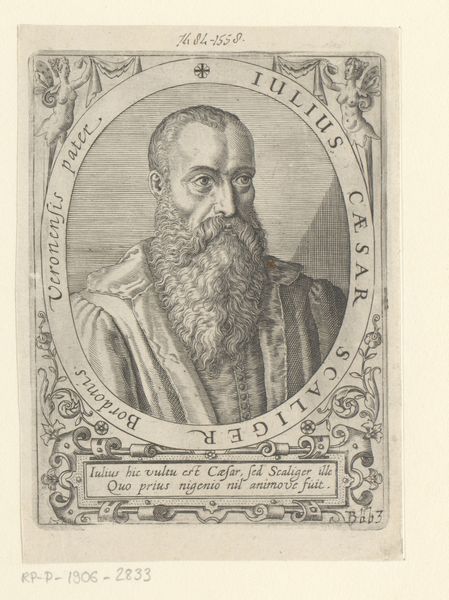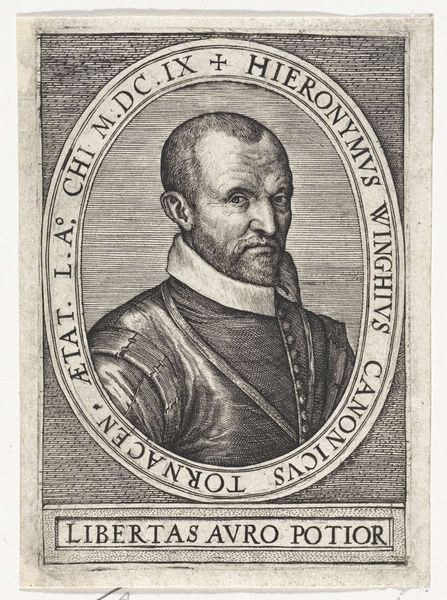
Portrait of Doctor Andreas Vesalius of Brussels Possibly 1574
0:00
0:00
drawing, print, paper, engraving
#
portrait
#
drawing
# print
#
paper
#
history-painting
#
italian-renaissance
#
engraving
Dimensions: 139 × 119 mm (image); 178 × 125 mm (plate); 215 × 149 mm (sheet)
Copyright: Public Domain
Curator: Let's talk about this engraving, "Portrait of Doctor Andreas Vesalius of Brussels," possibly from 1574. The print is currently held here at the Art Institute of Chicago. Editor: The intensity of his gaze is what strikes me first. And the intricate detailing in the fabric of his clothing is quite masterful. The engraver really used the materials well to capture texture. Curator: Vesalius, as a figure, disrupts conventional wisdom of the time. He revolutionized anatomy through direct observation, challenging Galen’s theories which had been accepted for centuries. His work defied norms, paving the way for a more empirical approach to science and medicine. His anatomical research impacted representations of gender within medicine as well, making this a portrait about science, knowledge, and changing belief systems. Editor: Exactly. Engraving itself was a key technology in disseminating that knowledge. This image, reproduced and circulated widely, becomes a tool for the standardization of medical understanding. The labor invested in the precise lines—consider the sheer time taken—speaks to the value placed on accurate depiction. The choice of paper, too, meant it could be easily transported and studied. The materiality is intertwined with its purpose. Curator: The portrait is really interesting because, to your point, the means of distribution impacts his influence and ideas about anatomical accuracy and how it informs representation of sex and gender in visual culture. We see in his face a subtle challenge to the viewer, defying them to ignore his discoveries. It highlights issues related to knowledge hierarchies and centers the tension that intellectual innovation generates when power structures are disrupted. Editor: Absolutely. The print format democratized access to Vesalius's image and, by extension, his knowledge. And thinking about the context, the printing press fueled not just religious reform but also a shift in scientific methodology and education. These kinds of portraits affirmed status but also drove progress through knowledge transfer. Curator: So thinking about what you’ve said makes me understand how art serves a social function here, making "Portrait of Doctor Andreas Vesalius of Brussels" much more than just an aesthetic representation, and more about intellectual shifts within Europe at the time. Editor: I think focusing on materiality and how an artwork gets distributed reveals an understanding of that historical and social context and what a revolutionary Vesalius was.
Comments
No comments
Be the first to comment and join the conversation on the ultimate creative platform.
